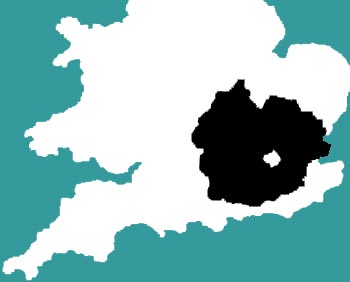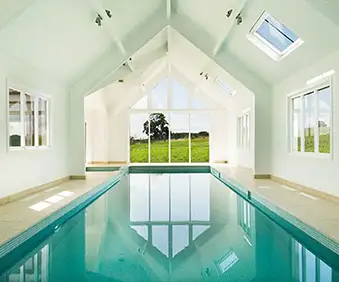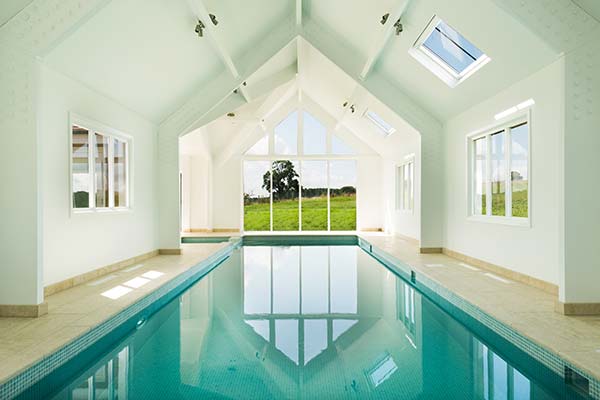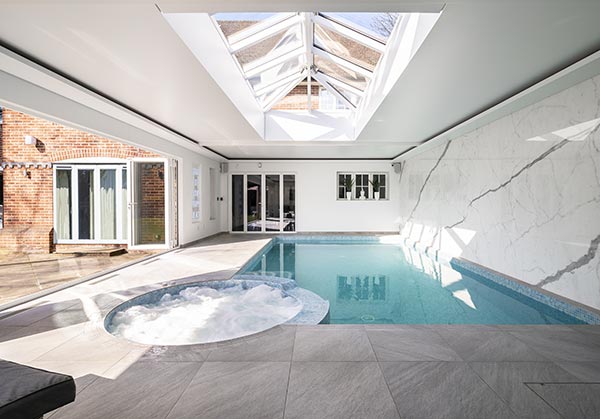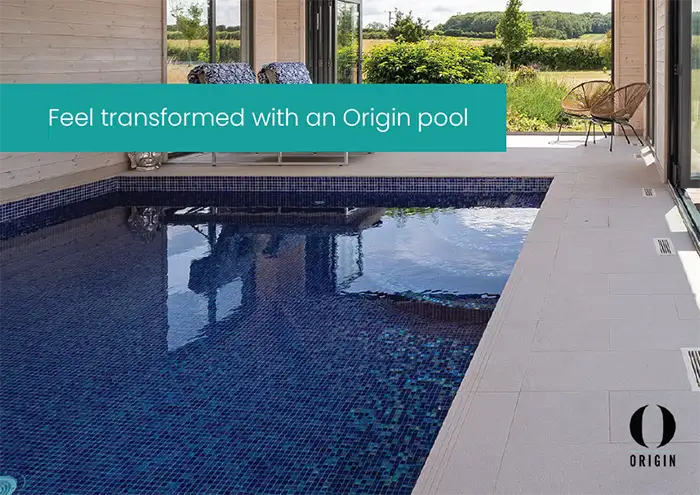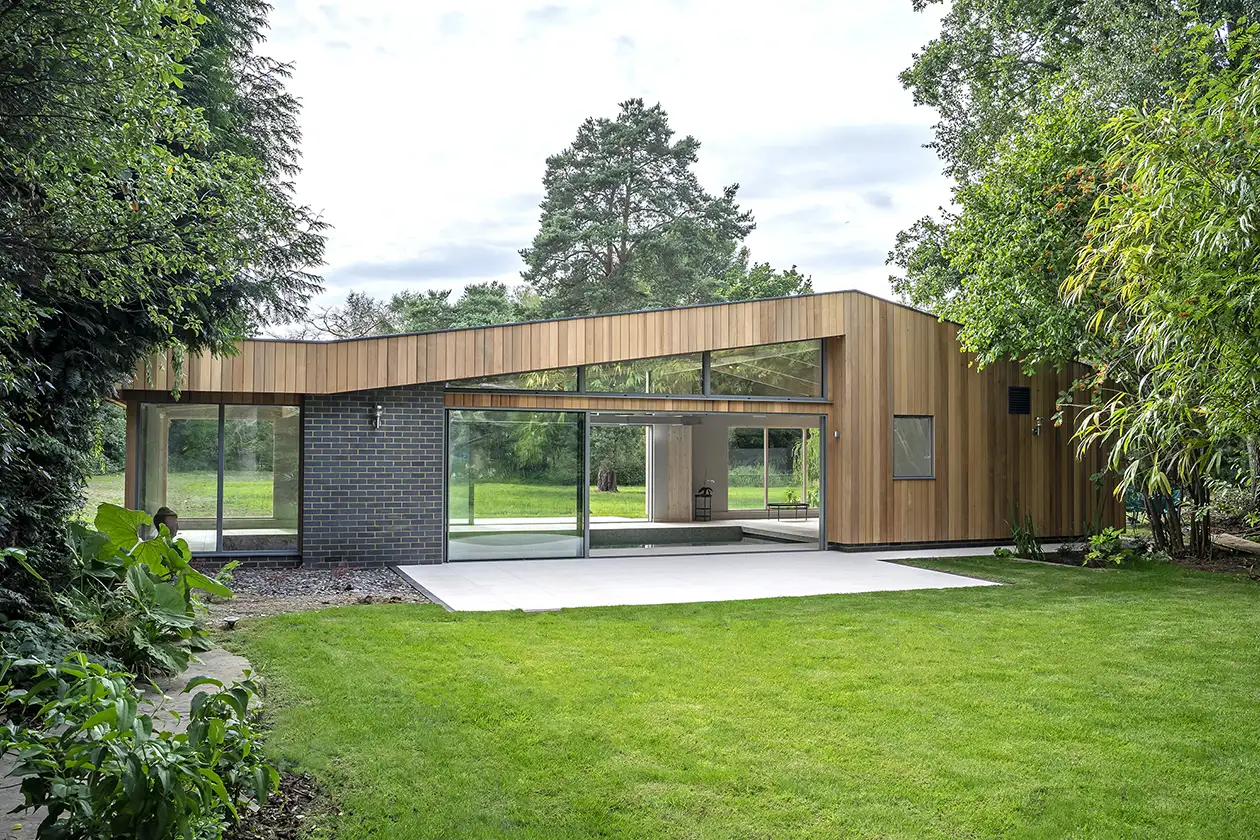
When designing an indoor pool, the choice of ceiling can significantly influence the space's aesthetics and functionality. Various swimming pool ceiling types offer unique benefits and drawbacks, each contributing to the overall experience of your indoor pool area. Join us as we explore some of the most popular ceiling options:
Barn Ceilings (Glulam Timber System)
Barn ceilings utilise a glulam timber system, which combines structural integrity with a Scandinavian aesthetic. One of the main benefits of this approach is its cost-effectiveness; the exposed white wood serves as both the structural roof deck and the ceiling finish, eliminating the need for additional treatments. Recent changes in the origin of timber supply have led to cost increases; however, it remains more cost-effective than other options, such as a stretch ceiling. Barn pool ceilings tend to absorb light rays, which can limit the effectiveness of any up-lighting fixtures, leading to a more subdued atmosphere and the need for directional lighting, which may not suit every design vision. Oak can also be substituted for the glulam structure described here.
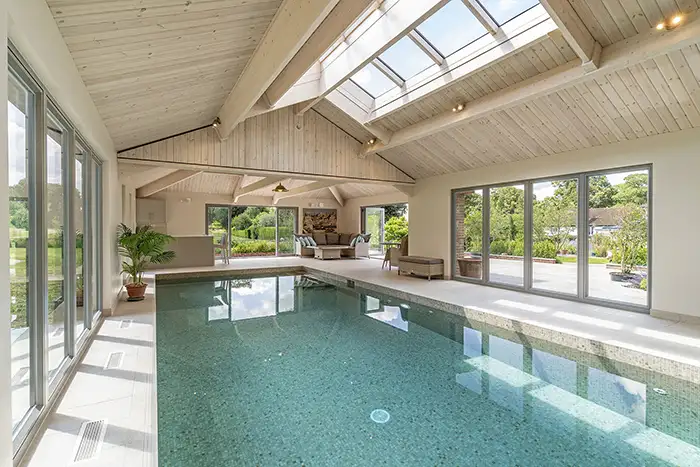

Stretch Ceilings
Stretch ceilings are gaining popularity in indoor pool design due to their versatility and aesthetic appeal. Acting as a moisture and vapour barrier, stretch ceilings help maintain the integrity of the pool environment. They are particularly effective in enhancing lighting; the reflective surface allows for a bespoke lighting regime, beautifully showcasing LED tape and wall lights. This creates a brighter atmosphere and enhances the overall ambience of the pool area. Stretch ceilings can also be customised in various colours and textures, making them a popular choice for those seeking a specific modern or contemporary design aesthetic.
Vaulted Ceilings
Vaulted ceilings offer a dramatic architectural feature, adding a sense of spaciousness to the indoor pool. However, they often require a steel portal frame or a complicated structural glulam support. Steel can pose challenges regarding moisture management in pool areas and is generally discouraged due to the potential for corrosion in humid environments. Additionally, vaulted ceilings typically necessitate full planning permission, as the ridge height usually exceeds 4 metres owing to the steeper roof pitch involved, which can complicate the design process. While visually stunning, vaulted ceilings may not be the most practical or cost-efficient choice for every indoor pool project, as this effect still requires one of the finishes from stretch, plaster or timber to complete it.
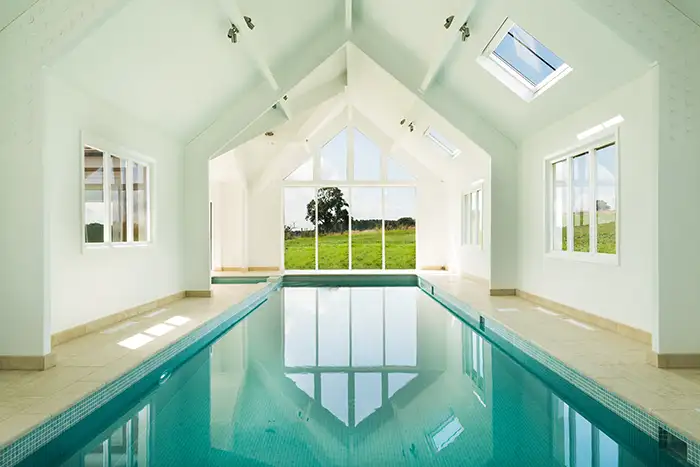
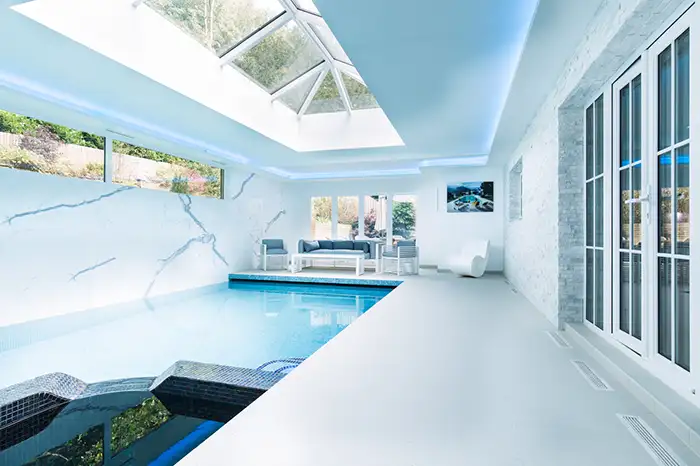
Plastered Ceilings
Plastered ceilings provide a traditional and elegant finish but come with significant considerations. While they can enhance the aesthetics of an indoor pool, they are often costly and labour intensive to install. Ongoing maintenance can also pose an issue, as plastered ceilings can develop settling cracks over time, necessitating repairs to maintain their appearance. Plastered ceilings can attract those seeking a polished look, but the associated costs and upkeep of the decorated finish must be carefully weighed.
Coffered Ceilings
Coffered ceilings are a sophisticated architectural feature that adds depth and visual interest, particularly in indoor pool design. Characterised by a grid of recessed panels, these ceilings enhance aesthetic appeal with their elegant look, creating a luxurious atmosphere. Highly customisable, homeowners can choose panel sizes, recess depths and materials such as wood, plaster and modern options. These so-called grid or recessed panels are usually best constructed in an indoor pool environment using stretch ceiling components consisting of the fixing tracks and membrane at opposing levels to break up the otherwise flat surface of the ceiling and provide durability against moisture. They also offer integrated lighting opportunities and create the illusion of higher ceilings, making spaces feel more extensive and open. A surprising benefit of a coffered ceiling is improved acoustic performance, as the mixture of the ceiling levels allows for better sound deflection, making them the perfect choice for indoor pools.
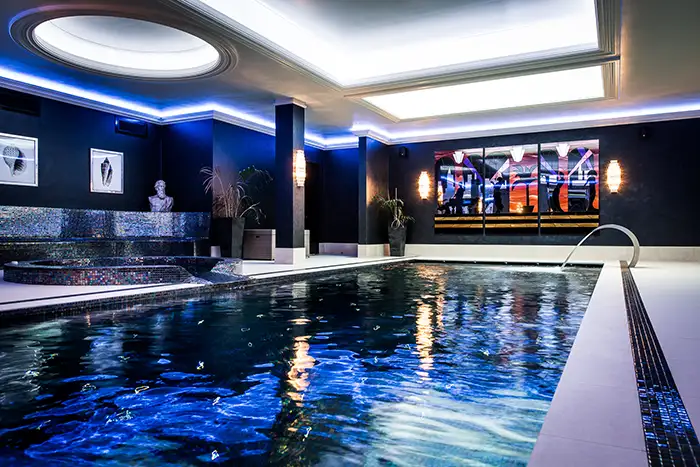
Choosing the right ceiling for your indoor pool is crucial in achieving the desired aesthetic and functionality. Each option—barn, stretch, vaulted, plastered or coffered —offers distinct advantages and considerations and can suit small indoor pools as well as larger pools. Whether you prioritise cost-effectiveness, lighting enhancement, or architectural style, understanding the implications of each ceiling type will help you create a stunning space that supports the practical needs of your indoor pool environment. By considering your style, budget and the unique characteristics of your indoor pool, you can select the perfect ceiling that elevates your space and enhances your swimming experience.


 Locations Covered
Locations Covered